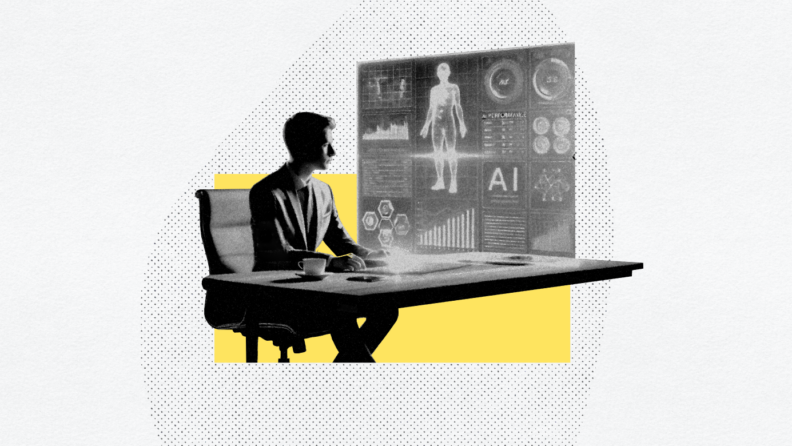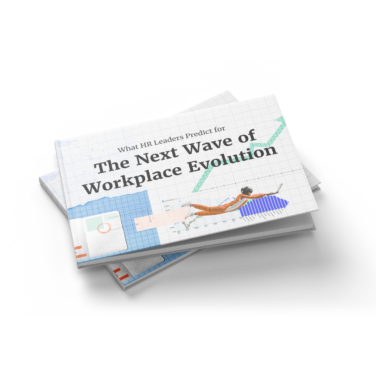Work Smarter, Not Harder: With AI tools, reviewers can streamline their work, allowing for more efficient performance evaluations and saving valuable time for more meaningful tasks.
Data-Driven Decisions Rule the Day: Advanced analytics powered by AI enable businesses to make informed decisions during performance reviews, ensuring fair assessments based on quantifiable metrics.
Tomorrow's Reviews: Tech Meets Tenderness: The integration of AI in performance reviews isn't just to enhance efficiency; it could foster a more personalized experience for employees, blending technology with an understanding of individual needs.
Artificial Intelligence (AI) is quickly changing how we live and work. From smart assistants to advanced data analytics, AI has found its way into almost every corner of business—and performance reviews are no exception.
In this article, we’ll explore how AI is transforming the traditional employee review process, the benefits and drawbacks, and what best practices you should consider if you’re thinking about using AI-driven performance reviews in your company.
How AI Is Impacting Performance Reviews
Performance reviews used to be annual (and often dreaded) events where employees sat down with their managers to discuss what went right and wrong over the past year. In recent years, there has been a big rethink about this approach to performance management, with companies moving toward semi-annual and quarterly reviews with greater regularity.
Now, AI is further disrupting the old-school approach by offering continuous, data-driven insights that are more objective and less time-consuming.
AI-powered performance review tools are starting to show that they can analyze employee data in real-time and offer feedback based on actual metrics rather than human bias or memory. For example, AI can assess project completion times, communication patterns, and even productivity levels using various tools integrated with workplace systems like Slack or project management platforms.
A practical example of this is how IBM’s "Watson" system is used to predict employee performance based on a combination of data points such as engagement, sentiment, and key performance indicators (KPIs).
The system provides managers with more objective assessments, allowing them to make better decisions on promotions, raises, or performance improvement plans.
Benefits Of AI For Performance Reviews
Using AI for performance reviews has a lot of potential advantages that traditional methods struggle to match.
Let’s dive into some of these.
1. Improved accuracy and objectivity
In theory, AI could help to eliminate human biases and errors. But make no mistake, it isn't inherently bias free, it’s trained on historical data and the knowledge of the people developing it. But if done right, it could have a positive impact here.
Traditional performance reviews can be skewed by factors like recency bias (when managers only focus on recent events) or favoritism. With AI, reviews are based on data points collected over time, providing a more comprehensive and fair assessment of an employee's work.
2. Continuous feedback
Continuous feedback enables workers to adjust and improve throughout the year rather than scrambling right before a review. And with AI, that feedback happens in real time as performance issues arise.
According to a study by Gallup, employees who receive daily feedback from managers are three times more engaged than those who receive feedback once a year. With AI-driven reviews, feedback that supports continuous performance management is not just possible but scalable across an entire organization.
3. Data-driven insights
AI can process enormous amounts of data—something humans simply can't do at the same speed. This allows for more personalized feedback. For example, AI might reveal trends showing that an employee performs best on collaborative projects or excels during high-stress tasks, helping managers offer more tailored advice on how an employee can make the most of their strengths.
4. Reduced administrative burden
HR professionals and managers spend countless hours gathering information, scheduling meetings, and filling out forms for performance reviews. AI has the potential to automate much of this process, allowing HR teams to focus on strategic initiatives rather than paperwork.
Drawbacks Of AI-Driven Performance Reviews
Despite the obvious benefits, there are also challenges to navigate in the AI era, especially when implementing it in performance reviews. It’s not a perfect system, and like any tool, it has limitations.
Lack of emotional intelligence
AI is great at crunching numbers, but it can’t assess the nuances of human interaction or emotional intelligence. For example, it might flag an employee for underperformance based on metrics without considering personal circumstances like family emergencies or mental health issues.
Risk of over-reliance
While AI can provide valuable insights, it's important not to rely solely on it. Human intuition, context, and empathy are still critical when assessing an employee’s overall contribution to the company.
Also, if the system should fail or experience difficulty, it’s important that humans still have the skills to be able to move forward with business critical tasks. In the end, it's going to be a collaboration between humans and AI that spells success.
Potential bias in algorithms
While AI aims to reduce bias, it’s important to remember that AI systems are only as good as the data they’re trained on. If the historical data is biased (e.g., favoring one gender or race over another), AI can inadvertently reinforce these biases. A famous example is Amazon’s AI recruiting tool, which was scrapped because it showed bias against female candidates.
Best Practices For Implementing AI Performance Reviews
If you’re considering adopting AI for performance reviews, you’ll need to approach the implementation thoughtfully. Here are some best practices to guide you:
The right AI tool for your needs
Not all AI performance tools are created equal. Some are more robust than others, some are cost effective and help with specific things. Evaluate your company’s specific needs before selecting a tool.
For example, some tools focus on continuous feedback, while others offer more robust data analytics. Make sure the tool integrates with your current HR software and communication platforms.
Ensure data privacy
Employee data is sensitive, and any AI-driven system you implement must comply with data privacy laws like the General Data Protection Regulation (GDPR) or the California Consumer Privacy Act (CCPA). Communicate clearly with employees about what data is being collected and how it will be used.
Train your managers
AI is only useful if people know how to use it. Train managers on how to interpret AI-generated insights and how to blend them with their own judgment. There are a lot of great managers in the workplace who do not need to be replaced by an automated experience.
Again, the goal is to augment, not replace human beings in the performance management process.
Audit for bias
Regularly audit your AI system to check for signs that bias may be present. If the system is making decisions that disproportionately favor one group over another, you’ll need to adjust the algorithms or data inputs.
When implementing an AI system into an existing process that largely works for your organization, you’ll also want to revisit the best practices for performance management that you built your current processes around to ensure the inclusion of AI suits the process, not the other way around.
Prompts For Managers To Try
Managers can struggle with integrating AI insights into real conversations. Here are some prompts to help blend AI-driven data with human interaction:
- "The AI flagged that your project completion times have improved by 15% over the past six months. Can you share what changes you made to improve your efficiency?"
- "According to the feedback data, your collaboration scores are consistently high. How can we leverage that skill in upcoming team projects?"
- "AI data shows a slight drop in communication metrics over the last quarter. What challenges have you been facing, and how can we support you?"
How Managers Can Prevent Bias In AI Performance Reviews
Bias in AI is a real concern. It can be present at any stage from analysis to the performance review questions you prompt employees with. To ensure fairness, managers can help ensure a good performance review experience by taking a few easy steps:
Monitor and adjust algorithms
Check the algorithms regularly to ensure they aren’t unintentionally biased. Members of your IT/tech teams may need to be involved in this process, so maintain buy-in from the appropriate individuals within that department.
Some AI tools offer transparency into how decisions are made, making it easier for HR to spot potential issues.
Blend AI and human judgment
If it sounds like I’m repeating myself, I am. For good reason. AI over-reliance isn’t just humans using AI too much too fast, it's the long term impact in which humans lose some of their skills to the lack of cognitive challenge.
It’s also, as a study from Stanford University shows, an issue with people’s willingness to accept AI’s analysis or decision even when it’s wrong.
AI can provide data, but it can’t capture everything. Managers should always consider the employee’s unique situation, skills, and contributions beyond what the AI system reports.
Diverse training data
The more diverse the data the AI system is trained on, the less likely it is to develop biases. Ensure that your AI vendor is committed to using diverse and representative data sets.
Want to keep up with all the latest developments in AI, HR technology and people management? Subscribe to the People Managing People newsletter to get all the latest insights, expert tips and trends analysis straight to your inbox.




